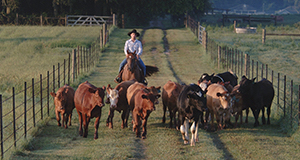Abstract
This article introduces concepts related to carbon sequestration, credits, and markets to help Extension agents, farmers, and concerned residents to better understand how agriculture can help to mitigate climate change, and thus become a part of Florida’s carbon economy. Written by Young Gu Her, Tara Wade, Sawssan Boufous, Jehangir Bhadha, and Michael Andreu, and published by the UF/IFAS Department of Agricultural and Biological Engineering, May 2022.
References
Bloodworth, H., and N. D. Uri. 2016. “Trend in Use of Conservation Practices in US Agriculture and Its Implication for Global Climate Change.” In Agricultural Practices and Policies for Carbon Sequestration in Soil. 37–44. CRC Press.
Frank, S., P. Havlík, J. F. Soussana, A. Levesque, H. Valin, E. Wollenberg, U. Kleinwechter, O. Fricko, M. Gusti, M. Herrero, and P. Smith. 2017. “Reducing Greenhouse Gas Emissions in Agriculture without Compromising Food Security?” Environmental Research Letters 12(10): 105004.
Li, C. 2018. “Modeling Impact of Agricultural Practices on Soil C and N2O Emissions.” In Soil Management and Greenhouse Effect. 101–112. CRC Press.
Myers, S. 2021. “Sustainability Markets, Part 5: Good Business Practices for Farmers Participating in Agriculture Ecosystem Credit Markets.” Market Intel, April 27, 2021, American Farm Bureau Federation. https://www.fb.org/market-intel/sustainability-markets-part-5-good-business-practices-for-farmers-participa
Plastina, A. 2021. “How Do Data and Payments Flow Through Ag Carbon Programs?” Ag Decision Maker A1-77. Ames, IA: Iowa State University Extension and Outreach. https://www.extension.iastate.edu/agdm/crops/pdf/a1-77.pdf
Plastina, A. 2021. “How to Grow and Sell Carbon Credits in US Agriculture.” Ag Decision Maker A1-76. Ames, IA: Iowa State University Extension and Outreach. https://www.extension.iastate.edu/agdm/crops/pdf/a1-76.pdf
Riahi, K., D. P. Van Vuuren, E. Kriegler, J. Edmonds, B. C. O’Neill, S. Fujimori, N. Bauer, K. Calvin, R. Dellink, O. Fricko, and W. Lutz. 2017. “The Shared Socioeconomic Pathways and Their Energy, Land Use, and Greenhouse Gas Emissions Implications: An Overview.” Global Environmental Change 42:153–168.
Sellars, S., G. Schnitkey, C. Zulauf, K. Swanson, and N. Paulson. 2021. “What Questions Should Farmers Ask about Selling Carbon Credits?” farmdoc daily 11:59. Department of Agriculture and Consumer Economics, University of Illinois, Urbana-Champaign. https://farmdocdaily.illinois.edu/2021/04/what-questions-should-farmers-ask-about-selling-carbon-credits.html
Shaffer, M. J. 2001. Modeling Carbon and Nitrogen Dynamics for Soil Management. Boca Raton, FL: Lewis Publishers.
United Nations. n.d. “Goals: 13: Take urgent action to combat climate change and its impacts*.” Accessed on May 18, 2022. https://sdgs.un.org/goals/goal13
USDA, Natural Resources Conservation Service (USDA, NRCS). 2022. Conservation Practices. https://www.nrcs.usda.gov/wps/portal/nrcs/detailfull/national/technical/cp/ncps/?cid=nrcs143_026849#A

